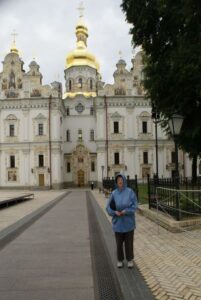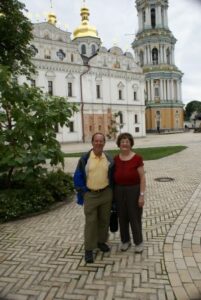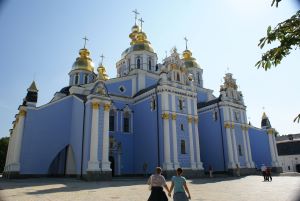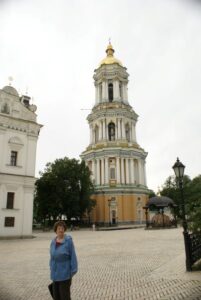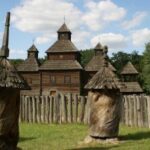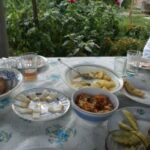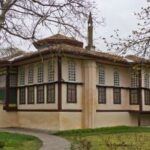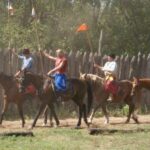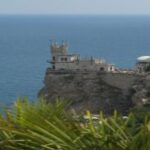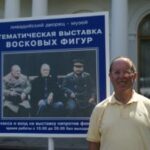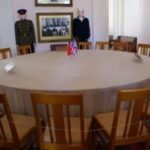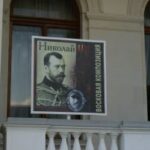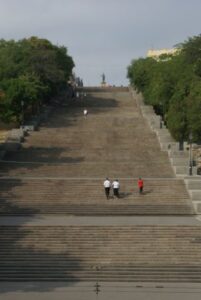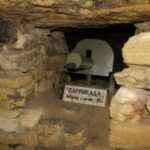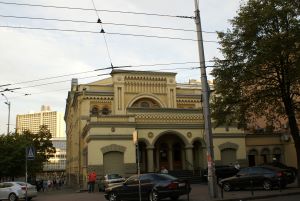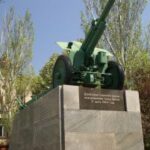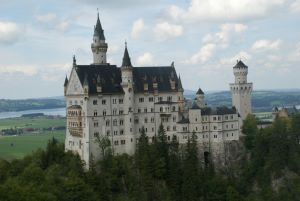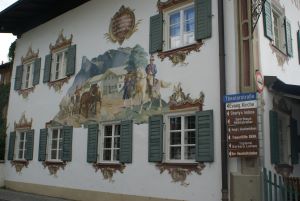
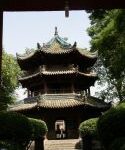
Napoleon once said, “the world will tremble when China awakes,” but I don’t think he had in mind what we experienced. As I mentioned, we were in Xi’an, about 500 miles from the epicenter, when the quake hit. It was about 2:30 in the afternoon, and we were in the Great Mosque of Xi’an when all of a sudden everything started to sway. We got away from any buildings (the Mosque area has lots of open areas) and watched while the water in the huge cauldrons (fire barrels)
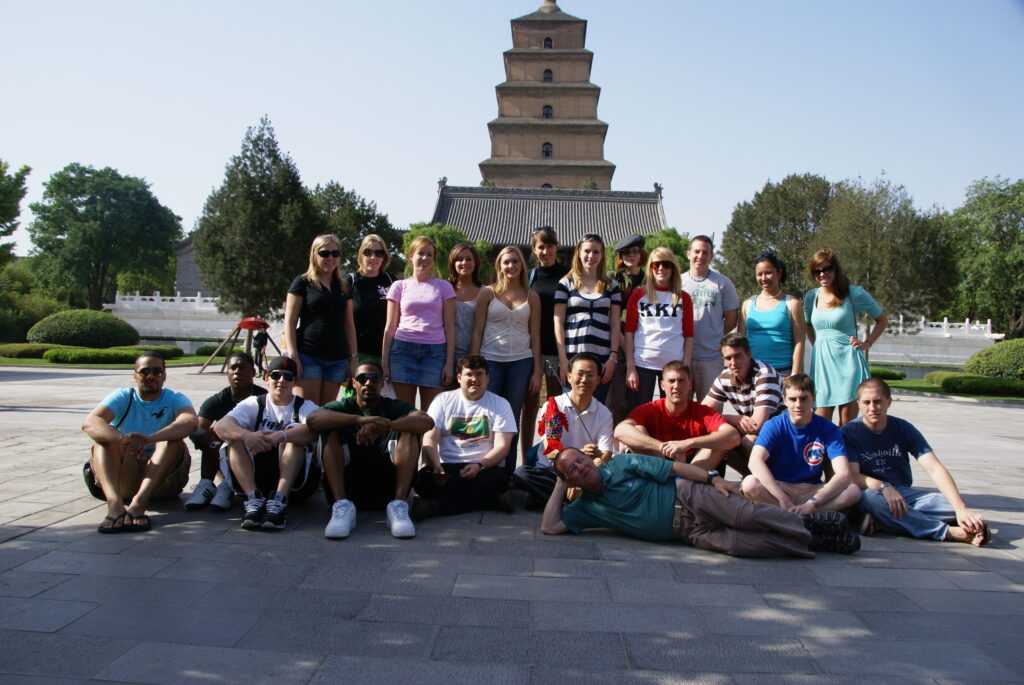
splashed around. When it stopped, we found that one of the tiles had fallen from the roof and crashed, and somewhat shaken, literally and figuratively, we wound our way back to the bus. We were on our way out of town to the airport, and as we drove through the city, we could see people were not in buildings; the local McDonalds told us that it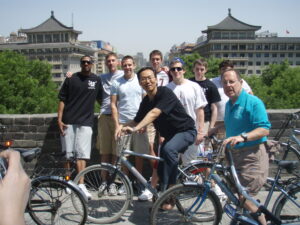 had not been given permission to go back inside. And it stayed that way for at least an hour. The news here has been filled with information about the damage, and China’s response. Contrast the government’s acceptance of aid, fast moving, sending of the army, etc. with the response of the junta in Myanmar, and I think you’ll understand how far China has come in becoming a responsible member of the world community. In 1976, an earthquake in Tangshan resulted in 100,000 deaths in five minutes, and China responded to efforts to help the way the Burmese generals did. It was an unsettling minute, and we had a lot of inquiries from worried parents and a worried University.
had not been given permission to go back inside. And it stayed that way for at least an hour. The news here has been filled with information about the damage, and China’s response. Contrast the government’s acceptance of aid, fast moving, sending of the army, etc. with the response of the junta in Myanmar, and I think you’ll understand how far China has come in becoming a responsible member of the world community. In 1976, an earthquake in Tangshan resulted in 100,000 deaths in five minutes, and China responded to efforts to help the way the Burmese generals did. It was an unsettling minute, and we had a lot of inquiries from worried parents and a worried University.
Our ability to communicate in this flat world has certainly changed since my early times here, when I remember asking our secretary to fax information on IWU basketball games. Today, we can hear them live on the net!
The rest of the trip so far, I’m happy to say, has been at least as exciting, and far less menacing. Jack Perkowski, in Managing the Dragon, a new book that I recommend highly, talks about two Chinas (economically and lifestyle speaking), the foreign/local, and the local. We’ve seen them both in the last few days (have we been here only a week?)

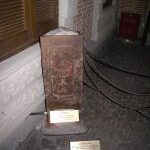
The foreign/local are parts of the big cities: certainly Beijing and Shanghai, but even Xi’an. In fact, Shanghai is almost non-Chinese anymore, there are so many expressways, high rises, and new buildings.
A case in point here in Shanghai is the museum I insisted we go to–it commemorates the first meeting of the Communist Party in China, held here in 1921.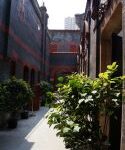 I’d gotten tour guides to take us here in the past–it’s not on the tour itinerary of most foreigners, who come to China (according to our guide) mostly to eat and shop. I remember that early trip (I got my first Mao watch there–when people asked what time it was, I said “Mao says it’s 5:21” which it is right now, “and therefore it is 5:21”).
I’d gotten tour guides to take us here in the past–it’s not on the tour itinerary of most foreigners, who come to China (according to our guide) mostly to eat and shop. I remember that early trip (I got my first Mao watch there–when people asked what time it was, I said “Mao says it’s 5:21” which it is right now, “and therefore it is 5:21”).
The museum is in the old French Concession (more on that later, maybe), in 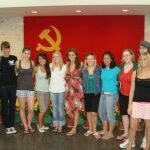 an area which the local government has preserved as a relic of the old city, but it is now a shopping mecca with bars and coffee houses and discos–including a Starbucks (that doesn’t serve Chai!) I remember narrow streets, laundry from windows, and row after row of the two-story houses. Today, apart from the saved island, there’s high rises. As for the museum, the information is the same, the rhetoric (feudal democratic revolution, etc.) the same, but a new slick display area (including a mockup of the table where the founding fathers met, with Mao standing and speaking) glorifying the new, post-1949, China.
an area which the local government has preserved as a relic of the old city, but it is now a shopping mecca with bars and coffee houses and discos–including a Starbucks (that doesn’t serve Chai!) I remember narrow streets, laundry from windows, and row after row of the two-story houses. Today, apart from the saved island, there’s high rises. As for the museum, the information is the same, the rhetoric (feudal democratic revolution, etc.) the same, but a new slick display area (including a mockup of the table where the founding fathers met, with Mao standing and speaking) glorifying the new, post-1949, China.
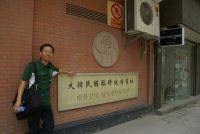 For Dr. Park, the highlight in Shanghai was where the Korean independence activists established a provisional government in 1919. It included Syngman Rhee, who was later president of an independent Korea.
For Dr. Park, the highlight in Shanghai was where the Korean independence activists established a provisional government in 1919. It included Syngman Rhee, who was later president of an independent Korea.
It was similar in Beijing. Our last day there, we took a hutong tour. The hutongs were (and I suppose are) the small buildings in Beijing, a courtyard-type house with four apartments for an extended family surrounding a central area. Our group got into bicycle rickshaws and got pedaled around the streets near Beihai, a local park once reserved for the 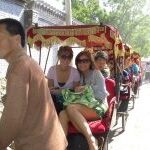 Mongol emperors. When I first came to China, there were many hutongs and no tours; today, there are few hutongs left and many tourists in them. Our guide told us the apartments sell for over $1 million despite many still lacking indoor plumbing and heating–and it gets cold in the winter in Beijing! Much of the rest of the city of 15 million is in high rises.
Mongol emperors. When I first came to China, there were many hutongs and no tours; today, there are few hutongs left and many tourists in them. Our guide told us the apartments sell for over $1 million despite many still lacking indoor plumbing and heating–and it gets cold in the winter in Beijing! Much of the rest of the city of 15 million is in high rises.
Even Xi’an is similar in being part of the foreign/local economy. I remember writing two years ago about being on Michigan Avenue (China style), the main streets with Puma and Armati and Rolex (the real ones) etc. stores. It is still the same today.
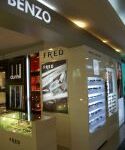
The local economy is frequently viewed two blocks away. When Dr. Park and I walked in front of our hotel in Xi’an, where we had a location within the city wall, and we walked down a leafy street (the trees even today are called French trees, and look like a sycamore), he was ecstatic. He said, “I feel at home here,” meaning the name brand stores and upscale folks reminded him of Seoul, which is his measure of what home (he’s a native of Seoul) should look like. We walked a block, and turned down a smaller street dominated by the local economy–some foreign brands (mostly made in China–like Coke), but local stores selling local quality at local prices, with chickens running on the street, goat carcasses for sale, and small restaurants offering the good food you don’t get in the tourist shops. I turned to him and said, “I feel at home here!”
The local economy was especially apparent on our long train ride, from Beijing to Xi’an, about 574 miles as the GPS reads, but probably much longer by overnight train–and we had the most fast (translating literally) train–about 12 hours long. Going through the countryside (mostly wheat in North China) we could see villages and farms, many of them unchanged by the world economy, or even machinery. People are in the fields all the time, not just for planting and harvesting.
Nonetheless, change is happening here too. The China Daily had an article about farmers who used to have a few pigs around; when they needed money, they would put the pig on a bicycle (I’ve seen them in the city) and sell it for seed money or whatever. As a measure of the changes, the Chinese now send a child to the city to work in a factory, or work in construction, or do whatever the middle classes in the city no longer want to do!
As for tourism, I think it’s alive and well. It’s the world’s biggest business, and certainly well developed in China. Take Xi’an.
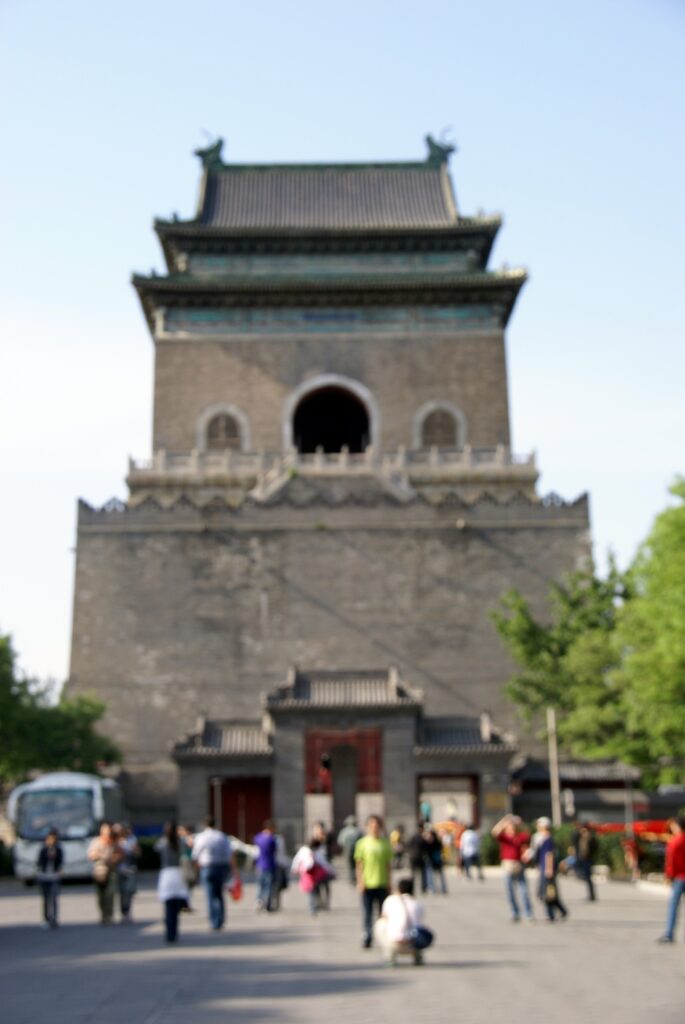
Capital of China until 907 A.D. (and starting in the 2nd century B.C.) the city welcomes about 7 million visitors a year. What you see depends in part on who you are. If you’re a Westerner, you probably spend no more than two nights. For one of them, you get taken to a high-tech Hollywood-type performance (surrounded by other foreigners) of music and dance that they say is Tang dynasty, but seems more Bill Bixby, who wrote a lot of ’30s choreographed dance and song movies (I refrained from singing Hooray for Hollywood). You also get to see the buried army of the first emperor, Qin Shih-huang, who unified China around 221. It is spectacular, and did help turn this once sleepy West China city into a tourist mecca.
When I got here in 1990, the buses pulled up to the museum, you walked the gauntlet between the shopkeepers who hassled and hustled to sell you copies of the warriors and left. Last time I was here (two years ago) you got to walk a long way through a rather attractive park from the bus lot to the museum. Today, you return to your bus passing an international mall with fountains and more opportunities to shop till you drop (do you remember the former leader who opened China–done shopping was his name!)
 And you get one of the ancient pagodas built in the 7th century. If you’re non-Western, especially a Buddhist, you can spend a week in the area around Xi’an and never run out of interesting ruins. For example (and I’ve never seen it), Xuan Zhong is buried here–the monk whose “Journey to the West” brought Buddhism to China. And if you are Japanese or Korean, you spend a lot of time in Xi’an because Chinese civilization spread to those countries during the Tang dynasty. The other tourist activity is a visit to the wall, a 13.8 kilometer wall, around 30 foot wide, that was built during the Ming Dynasty. It’s a great place to bike and see the city, though, as I said, over the years, much of the city has been rebuilt.
And you get one of the ancient pagodas built in the 7th century. If you’re non-Western, especially a Buddhist, you can spend a week in the area around Xi’an and never run out of interesting ruins. For example (and I’ve never seen it), Xuan Zhong is buried here–the monk whose “Journey to the West” brought Buddhism to China. And if you are Japanese or Korean, you spend a lot of time in Xi’an because Chinese civilization spread to those countries during the Tang dynasty. The other tourist activity is a visit to the wall, a 13.8 kilometer wall, around 30 foot wide, that was built during the Ming Dynasty. It’s a great place to bike and see the city, though, as I said, over the years, much of the city has been rebuilt.
You might have read in the Chicago paper a news story making the rounds here; China announced it formed a company to build aircraft. Our guide in Xi’an told us that factories there were already making parts for Boeing. That was probably more what Napoleon had in mind than earthquakes. Talk to you soon!

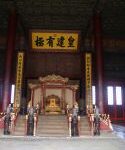
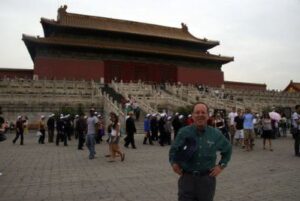
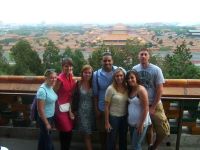
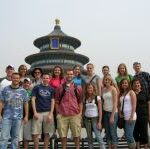

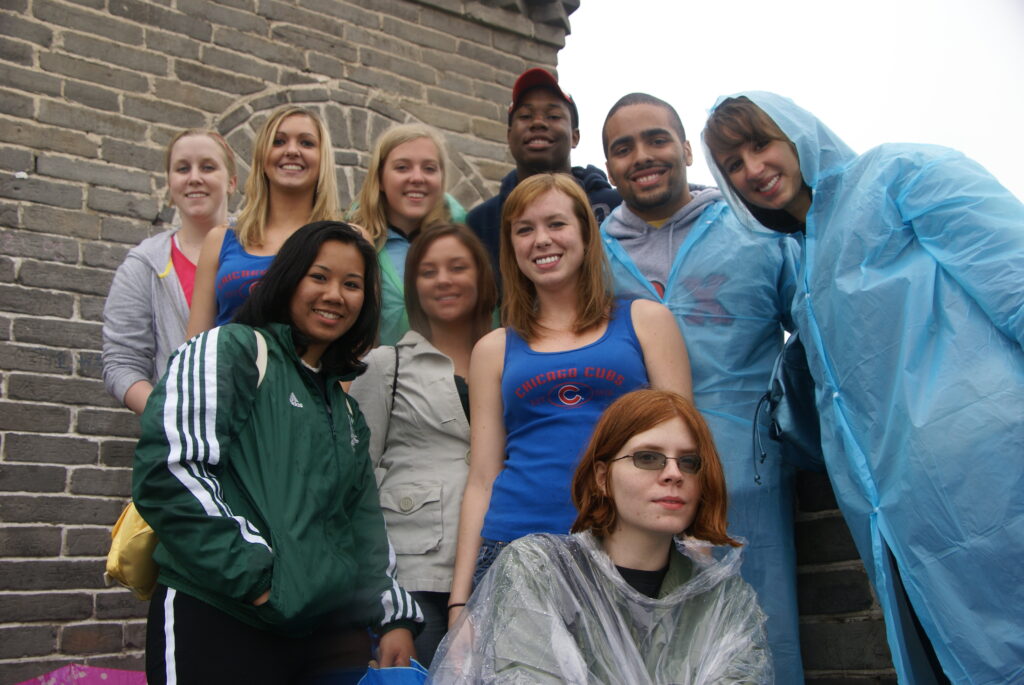
 Beijing is getting ready for the Olympics, and perhaps the best example I can give you of the face lifting (and of the changes from when I first came in 1990) is the airport. When I came in 90, I still remember the two lane road. You can still see it from the 8 lane expressway! We got stuck behind a horse cart. And the terminal was probably vintage 1940. It was so old they said it was when I was your age.
Beijing is getting ready for the Olympics, and perhaps the best example I can give you of the face lifting (and of the changes from when I first came in 1990) is the airport. When I came in 90, I still remember the two lane road. You can still see it from the 8 lane expressway! We got stuck behind a horse cart. And the terminal was probably vintage 1940. It was so old they said it was when I was your age.
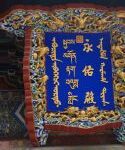
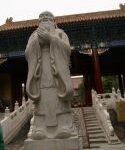
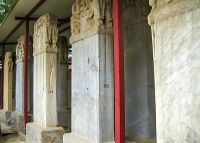
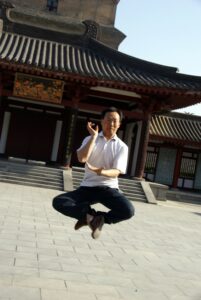

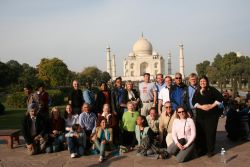


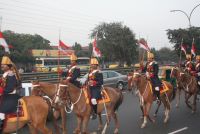

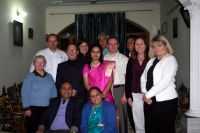
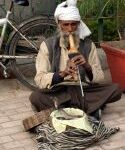
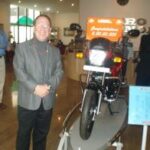
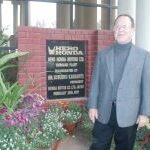


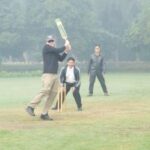




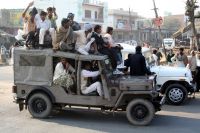
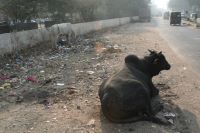
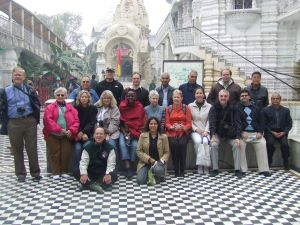

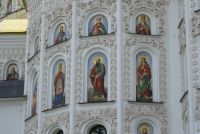
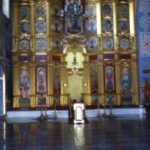 Reminiscences 2025
Reminiscences 2025